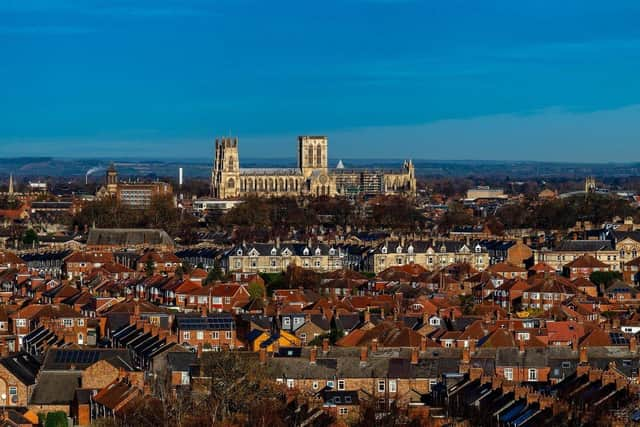Best things to do in York – TikTok star’s guide to the city
Professor Maxwell Paule is currently staying in York and surrounding areas to help “Americans to explore Roman things.”
The Americans are his students from Earlham College in Arkansas who inspired Mr Paule to start making TikTok videos on the popular social media platform.
Advertisement
Hide AdAdvertisement
Hide AdHe has since amassed nearly 170,000 followers and 4.4 million views to date.


Here Mr Paule shares some of his favourite things to do in York:
The Lord Mayor’s Walk
“I walked the Lord Mayor’s Walk last night - it’s lovely. The town is fantastic,” said Mr Paule who enjoys exploring York on foot .
Yorkshire Museum
Mr Paule also “loves” the Yorkshire Museum, based in Museum Gardens.
Advertisement
Hide AdAdvertisement
Hide AdThe Yorkshire Museum was one of the earliest purpose-built museums in the country.
The museum's website says: “It opened in 1830 as the new home for the collections of the Yorkshire Philosophical Society. The first keeper was the famous geologist John Phillips.
The museum is built in the grounds of York’s Abbey, St Mary’s, on land given by royal grant in 1828.
It probably wouldn’t be allowed today, but the museum was constructed over the remains of some of the Abbey buildings. These can still be seen in the basement of the museum.”
Advertisement
Hide AdAdvertisement
Hide AdThe Yorkshire Museum collections have remained true to its origins – archaeology and science.
Shambles
“As touristy as it is, my favourite place is The Shambles - we don’t get architecture like this in the United States.
“Just wandering around seeing how the buildings are crammed together or sagging and how they’re built - that’s my jam,” said Mr Paule.
The Shambles is one of York's most famous landmarks and one of the best-preserved medieval shopping streets in Europe, according to Visit York.
Advertisement
Hide AdAdvertisement
Hide AdThe Visit York website says: “The Shambles is believed to have been the inspiration behind Diagon Alley from the movie adaptation of the Harry Potter series.
“Although none of the original shop-fronts have survived from mediaeval times, some properties still have exterior wooden shelves, reminders of when cuts of meat were served from the open windows.”
“The street was made narrow by design to keep the meat out of direct sunlight, but you can readily imagine the Shambles packed with people and awash with offal and discarded bones.”
For those still wanting to experience a market feel, there’s an award-winning Shambles Market featuring over 70 traders just off the Shambles.
Jewbury
Advertisement
Hide AdAdvertisement
Hide AdOn his recent study trip Professor Maxwell, who is @ProfMaxwell on TikTok, headed just outside the walls leading from Monk Bar to Layerthorpe where he learned about Jewbury, the site of a mediaeval Jewish cemetery.
On his Tiktok the Professor says: “The site of the cemetery is now a parking lot. Don’t worry they excavated about half of the bodies in 1984.”
Jewbury is now a multi-storey car park for Sainsbury’s supermarket with just a plaque reminding visitors of the historical importance of this site.
“ As one of only ten Jewish cemeteries in medieval England and the only to be extensively excavated, the cemetery in Jewbury offered a tantalising glimpse into the lives and deaths of an enigmatic community of which little is known,” says the Historical York website.
York City Walls
Advertisement
Hide AdAdvertisement
Hide AdIt wouldn’t be a trip without walking the city’s walls, explains the unconventional professor who also took his students on a field trip to visit Hadrian’s Wall where the Tiktoker led a plank challenge with his students.
“York’s medieval City Walls (or “Bar Walls”), a scheduled ancient monument encircling the historic City of York, comprise 3.4km (two miles) of surviving masonry. They are the longest town walls in England. They were built mainly in the 13th century of magnesian limestone and, uniquely in England, were set on earthen ramparts.
York’s City Walls offer a splendid elevated walk around the city. The accompanying moats have largely disappeared but the slopes of the ramparts are well known for the display of daffodils in March and April,” says York Walls Website.
